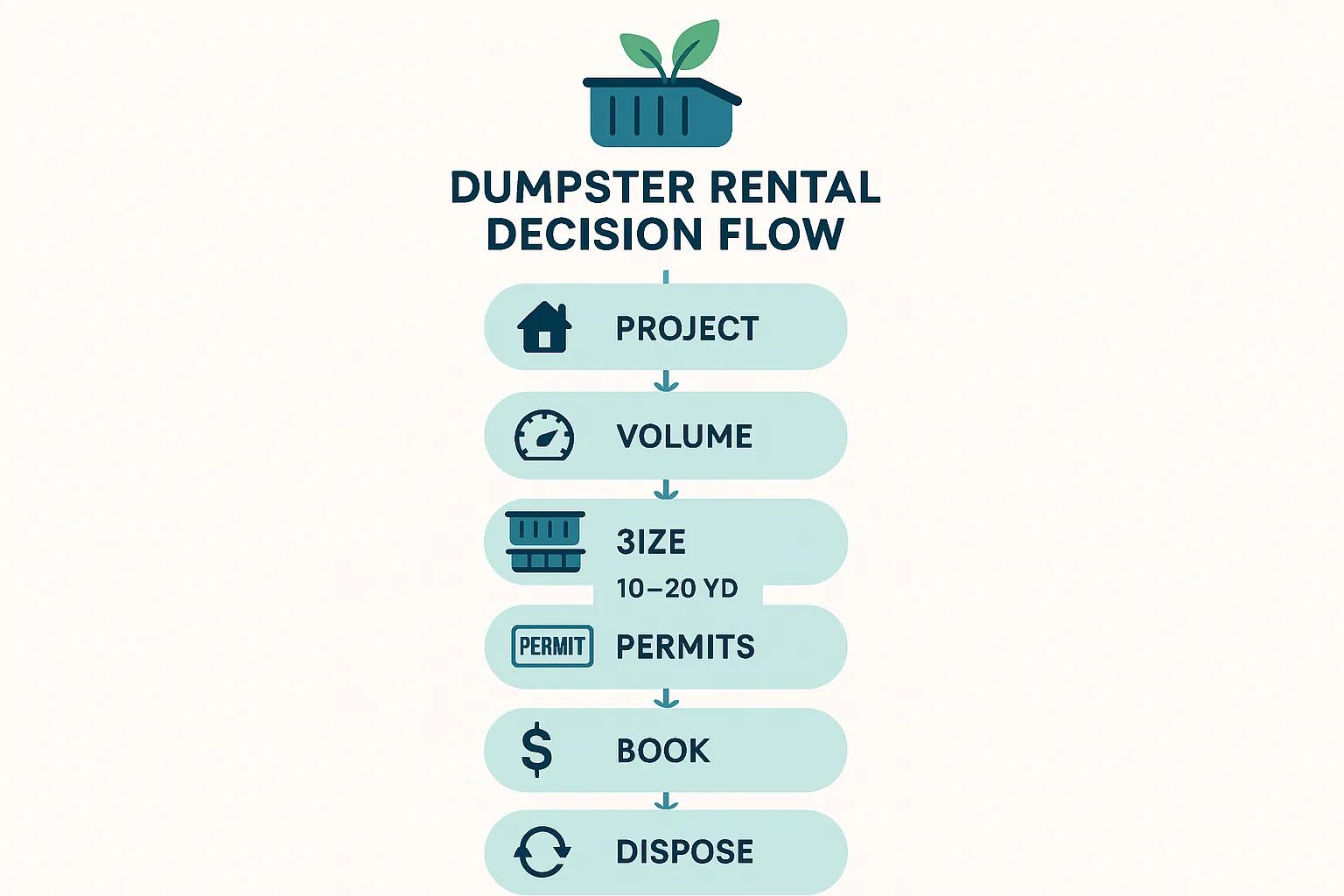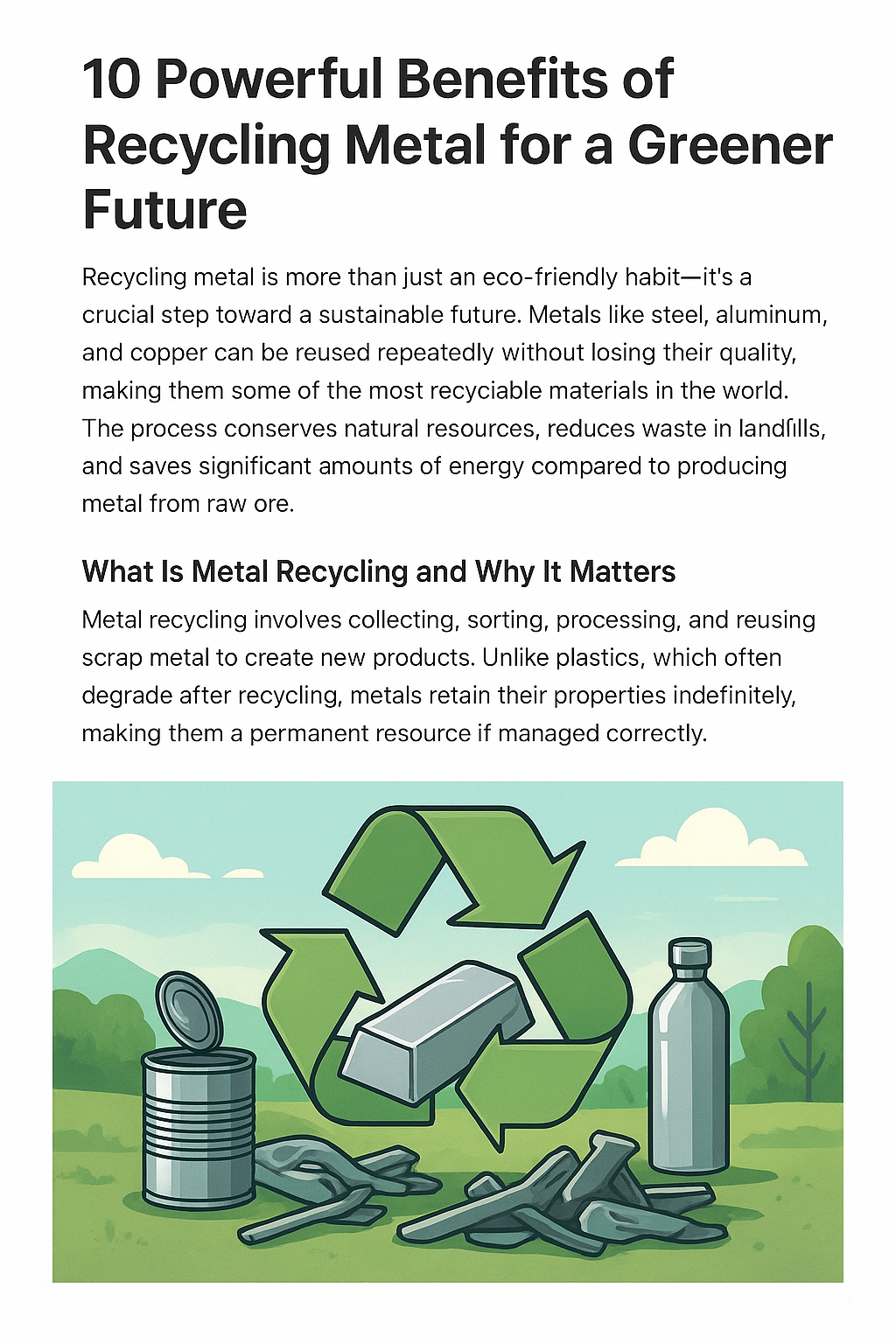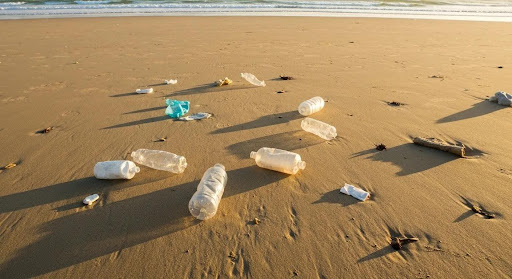
Commercial operations generate vast quantities of organic debris each year—an estimated 3.4 billion tons globally by 2050 if left unmanaged—driving up disposal costs and regulatory risk for multi-location enterprises. This guide delivers actionable insights on green waste management solutions , from defining green waste and mapping a scalable process to quantifying economic and environmental returns. It explores how large organizations can streamline collection, recycling, composting and dumpster rentals, navigate North American regulations, adopt zero-waste and circular economy principles, and prepare for emerging innovations. Readers will learn best practices, NWA’s turnkey dumpster services, and forward-looking strategies to transform organic waste into a sustainability asset.
What Is Green Waste and Why Does It Matter for Businesses?
Green waste is organic material such as plant trimmings and food scraps that can be diverted from landfills to produce compost or renewable energy, yielding cost savings and emissions reductions. By separating and processing these biodegradable streams, businesses improve operational efficiency and enhance environmental performance .
Landscaping clippings, kitchen off-cuts and industrial by-products all fall under green waste, and treating them as resource streams unlocks new value. Understanding the core types and the sustainability rationale establishes the foundation for a robust corporate green waste strategy that will be detailed in the sections ahead.
How Is Green Waste Defined and What Are Its Common Types?
Green waste refers to nitrogen-rich, biodegradable organics that decompose aerobically or anaerobically, transforming into compost or biogas and reducing methane emissions. Common categories include:
- Grass clippings, leaves and small branches generated by groundskeeping activities.
- Food scraps from cafeterias, catering and food-service operations.
- Agricultural by-products and trimmings from plant-based manufacturing.
These categories share a high moisture content and carbon-nitrogen ratio ideal for compost systems , setting the stage for efficient recycling and disposal.
Which Green Waste Materials Are Typical in Commercial Operations?
Commercial green waste streams vary by sector but often include: industries
| Waste Type | Source | Typical Volume |
|---|---|---|
| Landscaping Debris | Retail, hospitality campuses | 1–3 tons/week per site |
| Food Waste | Restaurants, institutional kitchens | 500–2,000 lbs/week |
| Industrial Organics | Breweries, food processing | 1–5 tons/week per plant |
These materials share the attribute of being compostable, enabling facilities to convert them into soil amendment or renewable energy feedstock while lowering landfill fees and carbon liabilities.
Why Is Managing Green Waste Critical for Environmental Sustainability?
Effective green waste management sequesters carbon in soils, curbs methane release from landfills and closes resource loops by returning nutrients to the earth. Redirecting a single ton of yard trim into compost can avoid up to 0.3 to 0.5 tons of CO₂-equivalent emissions, strengthening corporate climate goals and public image.
The Environmental Impact of Landfill Waste
Landfills are a significant source of methane emissions, a potent greenhouse gas. Diverting organic waste from landfills through composting and anaerobic digestion can significantly reduce these emissions, contributing to climate change mitigation efforts. Composting also enriches soil, reducing the need for chemical fertilizers.
United States Environmental Protection Agency (EPA), “Reducing Methane Emissions from Landfills” (2024)
This research supports the article’s claims about the environmental benefits of green waste management, specifically the reduction of methane emissions and the positive impact on soil health.
This environmental leverage prepares businesses for deeper operational efficiencies discussed next .
How Does the Green Waste Management Process Work for Large Businesses?
A scalable green waste process integrates centralized audits, standardized collection, and tailored disposal routes to ensure consistency across dozens or thousands of sites. By embedding clear segregation practices and leveraging composting or recycling partners, organizations convert organic refuse into high-value outputs .
The following steps illustrate a comprehensive workflow that supports cost control and sustainability metrics while feeding into corporate reporting systems .
What Are the Key Steps in Commercial Green Waste Collection and Disposal?
- Conduct a multi-site waste audit to quantify organic streams and identify reduction opportunities.
- Implement on-site source separation training for landscaping and facilities teams.
- Deploy labeled bins or roll-off containers sized to predicted green waste volumes.
- Schedule regular pickups with vetted haulers to ensure timely removal.
- Transport material to composting or anaerobic digestion facilities.
- Monitor diversion rates and adjust bin frequency or capacity as needed.
This end-to-end approach minimizes contamination, maximizes diversion and prepares organizations for detailed ROI measurement .
How Do Recycling and Composting Services Transform Green Waste?
Recycling and composting convert organic refuse into valuable products—mulch, soil amendments or biogas—through biological breakdown processes. Composting bulks and stabilizes plant matter in windrows or vessels, producing nutrient-rich compost in weeks to months. Anaerobic digestion captures methane to generate renewable electricity or pipeline-quality gas. Both pathways support circular economy goals by turning waste into resources and cutting disposal costs .
What Role Do Waste Audits Play in Optimizing Green Waste Management?
Waste audits serve as the data-gathering mechanism that defines diversion baselines, pinpoints contamination sources and informs bin sizing across locations. By sampling and weighing green waste fractions, enterprises unveil cost-saving levers—such as bin consolidation or route optimization—and verify compliance with diversion targets. Ongoing audits directly improve program performance and support executive reporting on sustainability KPI s.
What Are the Economic and Environmental Benefits of Green Waste Management?
Green waste diversion delivers dual returns: measurable cost reductions from lower landfill tipping fees and environmental gains via emissions avoidance and soil health improvement. Organizations that divert 90 percent of their organic stream can cut waste disposal expenses by up to 20 percent annually, while reinforcing brand reputation under ESG mandates .
| Benefit Category | Mechanism | Business Impact |
|---|---|---|
| Cost Savings | Reduced landfill fees and taxes | 15–20 percent expense reduction |
| Emissions Reduction | Avoiding methane and CO₂ releases | Carbon footprint cut by 0.3 to 0.5 t/ton |
| Resource Recovery | Compost and biogas production | New revenue streams or credits |
| Brand Enhancement | ESG reporting and sustainability | Improved stakeholder perception |
How Can Businesses Achieve Cost Savings Through Green Waste Diversion?
By diverting green waste, companies lower disposal contracts, reduce haul distances and qualify for reduced local waste surcharges. Establishing clear separation protocols alongside volume-based bin rentals from a single provider helps achieve predictable pricing and consolidated billing—unlocking up to 20 percent in annual savings .
Economic Benefits of Waste Diversion
Businesses can achieve substantial cost savings by diverting green waste from landfills. These savings come from reduced tipping fees, lower waste disposal contract costs, and potential rebates or incentives offered by local governments for waste reduction and recycling programs. Implementing effective waste management programs can also improve a company’s public image.
The Recycling Partnership, “The Economic Benefits of Recycling” (2023)
This citation supports the article’s discussion of the economic advantages of green waste management , such as cost savings and brand enhancement.
How Does Sustainable Waste Management Enhance Corporate Brand Image?
Demonstrating leadership in organic waste recycling and composting signals a commitment to environmental stewardship. Publicizing diversion metrics, showcasing compost-based landscaping improvements and featuring sustainability stories in annual reports strengthen brand equity with customers, investors and communities .
What Is the Environmental Impact of Effective Green Waste Practices?
Redirecting green waste from landfills prevents methane formation, improves soil carbon content and supports a circular nutrient economy . Every ton of compost applied to landscapes sequesters roughly 0.3 to 0.8 tons of CO₂-equivalent and reduces reliance on chemical fertilizers, aligning operations with global climate objectives.
How Can Businesses Rent Commercial Dumpsters for Efficient Green Waste Disposal?
Commercial dumpster rental provides a turnkey container solution sized and serviced to match green waste generation patterns. By partnering with a single broker offering varied bin capacities and flexible schedules, organizations streamline logistics, enforce compliance and gain transparency through centralized reporting portals .
What Dumpster Sizes and Types Are Best for Different Green Waste Volumes?
| Dumpster Size | Capacity | Ideal Green Waste Streams |
|---|---|---|
| 10 Yard | ~3 to 4 tons | Small landscaping or kitchen scraps at single sites |
| 20 Yard | ~6 to 8 tons | Medium campuses or multiple small outlets |
| 30 Yard | ~9 to 12 tons | Large retail complexes with seasonal pruning |
| 40 Yard | ~12 to 16 tons | Significant industrial plant by-products |
How Does the Dumpster Rental Process Work for Multi-Location Businesses?
- Inventory all green waste generation points and forecast volumes per site.
- Choose container sizes and pickup cadence based on audit data.
- Consolidate rental agreements under one broker for uniform terms and single invoicing.
- Utilize an online portal to track pickup schedules, generate diversion reports and manage service exceptions.
- Adjust container deployments dynamically in response to seasonal or operational shifts.
This multi-site model reduces administrative overhead and delivers greater cost control .
What Are the Most Common FAQs About Renting Green Waste Dumpsters?
Commercial tenants and facilities managers often ask about rental flexibility, contamination rules and reporting capabilities. Key considerations include:
- Ensuring dumpster liners or covers to prevent cross-contamination with general waste.
- Verifying that services include emergency or on-demand pickups during peak landscaping seasons.
- Confirming that manifest and weight-ticket data feed into centralized dashboards for audit and sustainability reporting.
Addressing these factors up front simplifies vendor management and maintains diversion integrity .
What Are the Key North American Regulations Governing Green Waste Management?
North American jurisdictions enforce organic waste diversion targets, compostable packaging mandates and landfill bans for yard debris. Understanding federal guidelines alongside state and provincial statutes ensures legal compliance and avoids penalty assessments .
Which Laws and Regulations Affect Commercial Green Waste Disposal?
| Jurisdiction | Regulation | Requirement |
|---|---|---|
| Federal (EPA RCRA) | Resource Conservation and Recovery Act | Defines municipal solid waste streams but does not specifically mandate organic waste diversion |
| California (SB 1383) | Short-Lived Climate Pollutants Reduction Strategy | 50 percent organic waste reduction by 2020 and 75 percent by 2025 |
| British Columbia | Organic Matter Recycling Regulation | Mandatory composting service for landscapers and certain businesses |
Regulations and Compliance in Green Waste Management
Various jurisdictions across North America have implemented regulations to promote organic waste diversion. These regulations include landfill bans for yard waste, mandatory composting programs, and requirements for businesses to reduce their waste sent to landfills. Compliance with these regulations is essential to avoid penalties and ensure responsible waste management practices.
California Department of Resources Recycling and Recovery (CalRecycle), “Mandatory Commercial Organics Recycling” (2024)
This citation provides context for the regulatory landscape discussed in the article, specifically highlighting the importance of compliance with state and local laws.
How Does National Waste Associates Ensure Regulatory Compliance?
National Waste Associates integrates local regulation databases into service planning, vets composting partners for permitted operations and automates diversion reporting through a secure online portal . This compliance framework minimizes audit risk and keeps clients prepared for evolving mandates.
What Are the Implications of Emerging Organic Waste Legislation?
Future policies will expand compostable packaging requirements, tighten contamination limits and introduce landfill bans for specific feedstocks. Businesses should invest in scalable separation infrastructure and partner with brokers who track regulatory changes, ensuring seamless adaptation and ongoing compliance.
How Are Zero Waste Initiatives and Circular Economy Principles Shaping Green Waste Management?
Zero waste frameworks emphasize elimination, reuse, recycling and composting—pursuing a closed-loop system where green waste becomes a feedstock rather than a disposal cost. Corporate programs built on circular economy tenets prioritize resource recovery , reducing raw material demand and enhancing brand sustainability credentials.
What Are Zero Waste Strategies for Corporations Managing Green Waste?
- Design waste reduction targets tied to procurement policies that favor compostable materials.
- Establish internal composting or anaerobic digestion facilities for high-volume generators.
- Collaborate with supply chain partners to reuse compost in landscaping or packaging renewal.
How Does Green Waste Management Support a Circular Economy?
By converting organic refuse into compost or biogas, organizations loop nutrients and energy back into operations or supply chains. This resource recovery model reduces dependence on virgin inputs, lowers greenhouse gas emissions and fosters resilient material cycles across industries .
What Are Examples of Corporate Success in Sustainable Waste Programs?
Several multi-site retailers and hospitality groups have achieved over 90 percent organic diversion by pairing on-site composting pods with centralized bin rentals. Renewable biogas produced from food waste powers facility generators, offsetting energy costs and demonstrating the financial viability of ambitious waste programs.
What Future Trends and Innovations Will Impact Green Waste Management Solutions ?
Advancements in digital monitoring, AI-powered sorting technologies and waste-to-energy platforms are redefining green waste processing. These innovations will drive down contamination rates, optimize logistics and unlock new valorization pathways for organic streams.
How Are AI and Advanced Technologies Transforming Waste Sorting and Management?
Machine-vision systems identify organic fractions on sorting lines, reducing manual labor and boosting purity rates. IoT-enabled bins relay fill-level data in real time, enabling dynamic route planning and minimizing idle capacity. These technologies combine to elevate diversion efficiency and cut operational costs.
What Role Will Waste-to-Energy and Biogas Production Play in the Future?
Anaerobic digestion facilities are scaling to handle diverse green waste feedstocks, converting them into pipeline-quality biogas and fertilizer pellets. This valorization trend complements composting operations, offering alternative revenue models and deepening circular economy integration .
How Can Businesses Prepare for Upcoming Changes in Green Waste Regulations?
Proactive businesses should perform regular waste audits, invest in adaptable bin infrastructure and partner with brokers that track policy developments. Training staff on new separation requirements and leveraging digital reporting tools will ensure readiness for evolving diversion mandates .
Green waste management transforms organic refuse from a regulatory burden into a strategic asset. By defining clear processes, quantifying benefits, leveraging commercial dumpster rental services and staying ahead of regulations and innovations, enterprises build resilience, cut costs and reinforce sustainability leadership. Implementing these solutions now positions businesses to thrive in a circular economy and meet the environmental expectations of tomorrow’s stakeholders.



